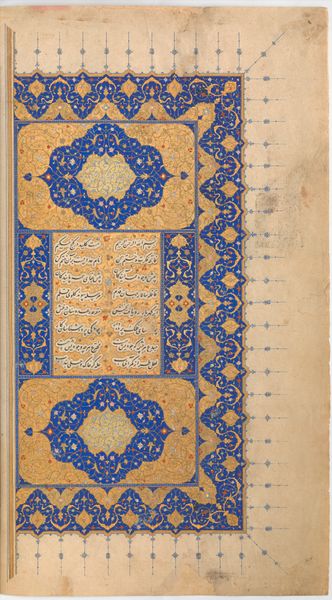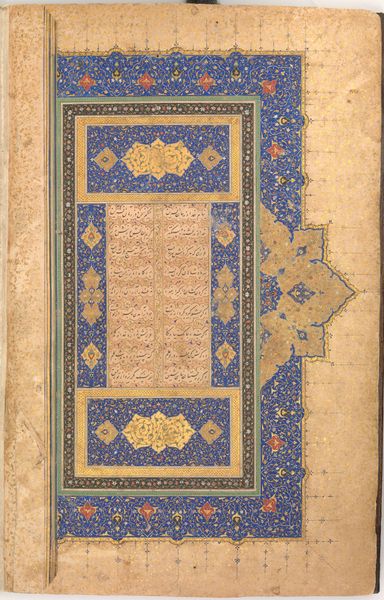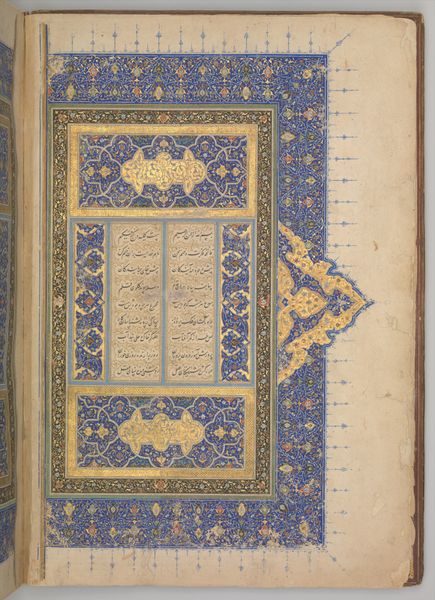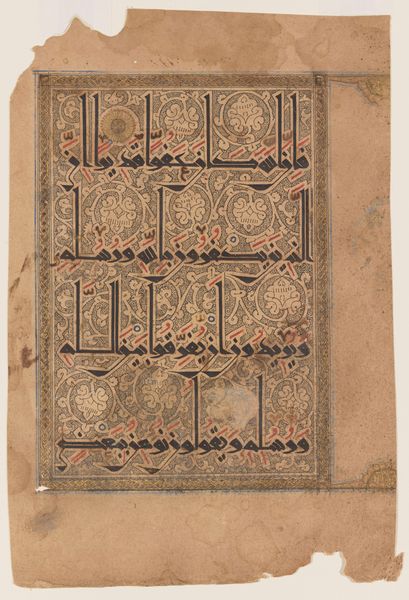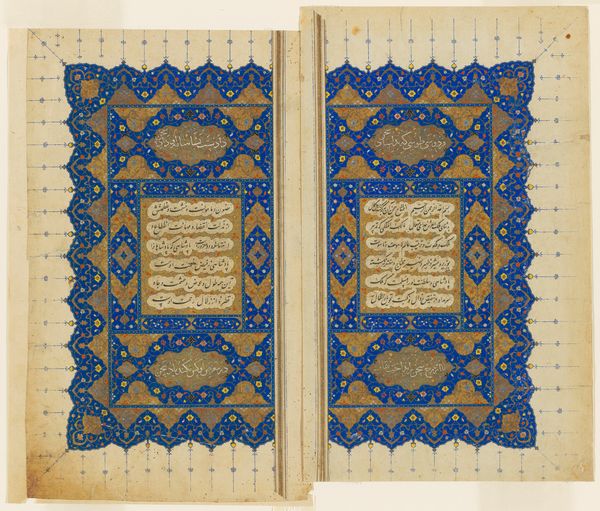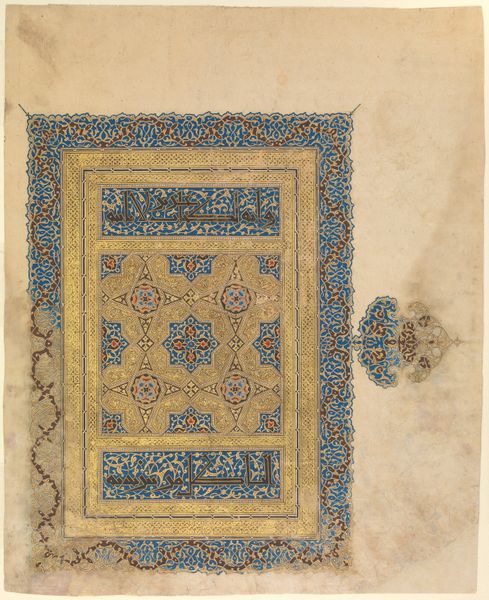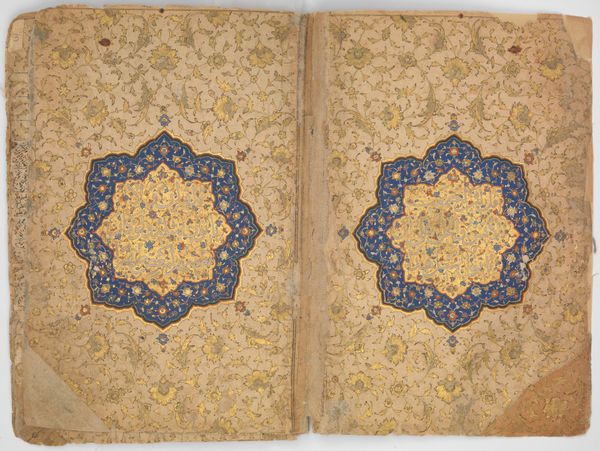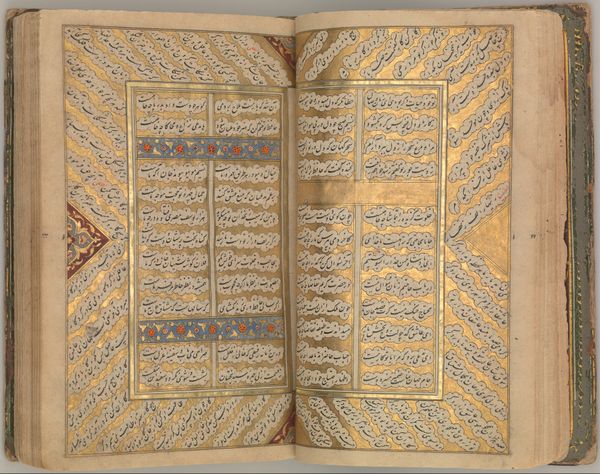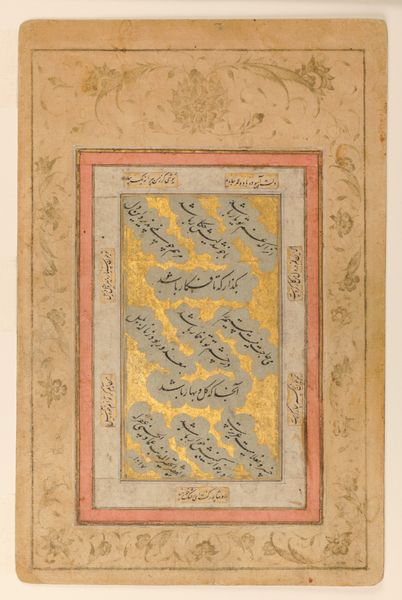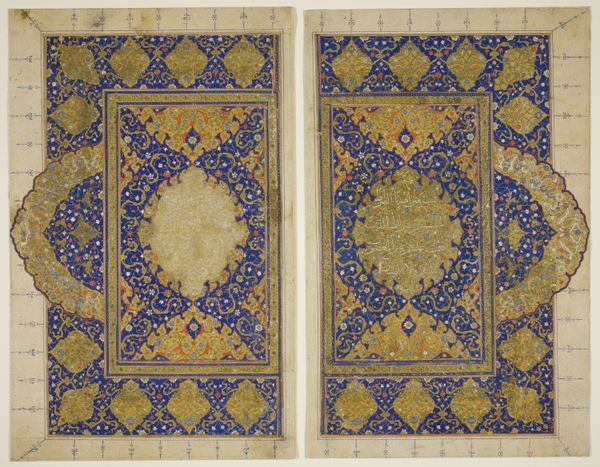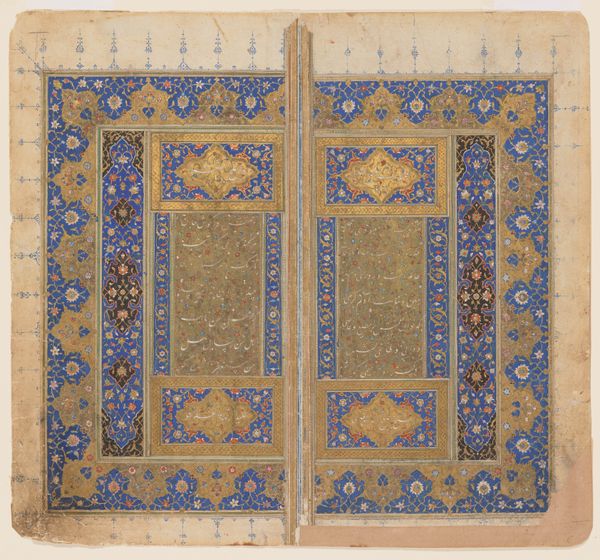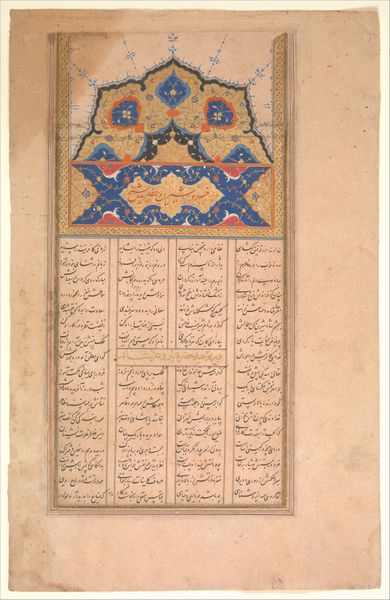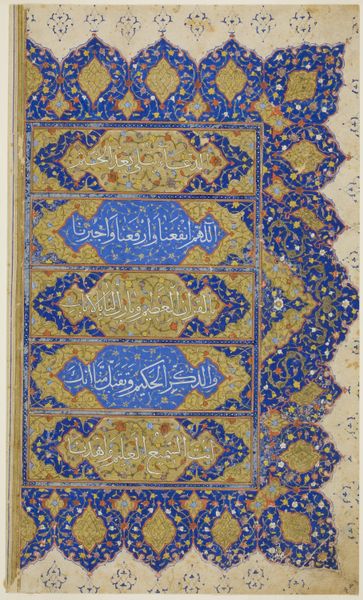
Double Title Page from a `Aja'ib al-Makhluqat wa Ghara'ib al-Mawjudat (The Wonders of Creation and the Oddities of Existence) 1389 - 1460
0:00
0:00
paper, ink
#
water colours
#
paper
#
ink
#
geometric
#
islamic-art
#
miniature
#
calligraphy
Dimensions: H. 11 3/4 in. (29.8 cm) W. 8 7/8 in. (22.5 cm)
Copyright: Public Domain
Editor: This is the Double Title Page from a `Aja'ib al-Makhluqat wa Ghara'ib al-Mawjudat (The Wonders of Creation and the Oddities of Existence) created between 1389 and 1460. It’s made of ink, watercolours, and gold on paper, and attributed to Zakariya al-Qazwini. I’m immediately drawn to the incredible detail – it must have taken so much skill and time. What stands out to you? Curator: What interests me is how this miniature collapses distinctions between 'fine art' and craft. Consider the materials – ink, watercolour, gold – applied to paper. The *production* of the page, the crafting of calligraphy, the preparation of pigments—it’s all labour. Can we see this page not only for its symbolic content but for the immense labour congealed in the production of it? Editor: That's interesting, I hadn't considered the labor aspect. So, you're saying we should also think about the artisans who physically made this object? Curator: Precisely. What social conditions made such laborious production possible? The sourcing of gold, the training of scribes, the patronage system… these pages offer a glimpse into a whole network of production and consumption. And even consider, is it 'paper' as we know it? Understanding how this support *itself* was fabricated gives even deeper insight into material conditions and trade. Editor: That perspective completely changes how I view the page. Thinking about where each material came from, who prepared it, and the skills required to put it all together makes it much more tangible. Curator: Exactly! And thinking this way invites a reassessment of aesthetic value itself. What might close looking tell us about Islamic attitudes toward art or, for instance, wealth? Perhaps the work itself operates almost as a monument to craft... Editor: I see now – looking at the process and materials helps connect the artwork to broader social and economic factors of its time. Thanks for pointing that out! Curator: My pleasure. Material considerations can lead us to broader interpretations of art making’s place in history and the global world!
Comments
No comments
Be the first to comment and join the conversation on the ultimate creative platform.
